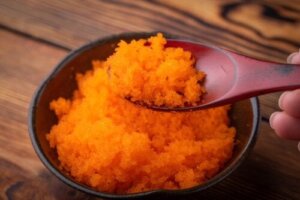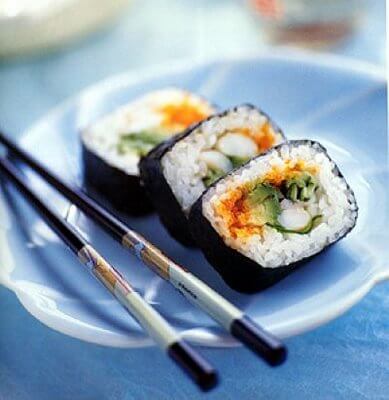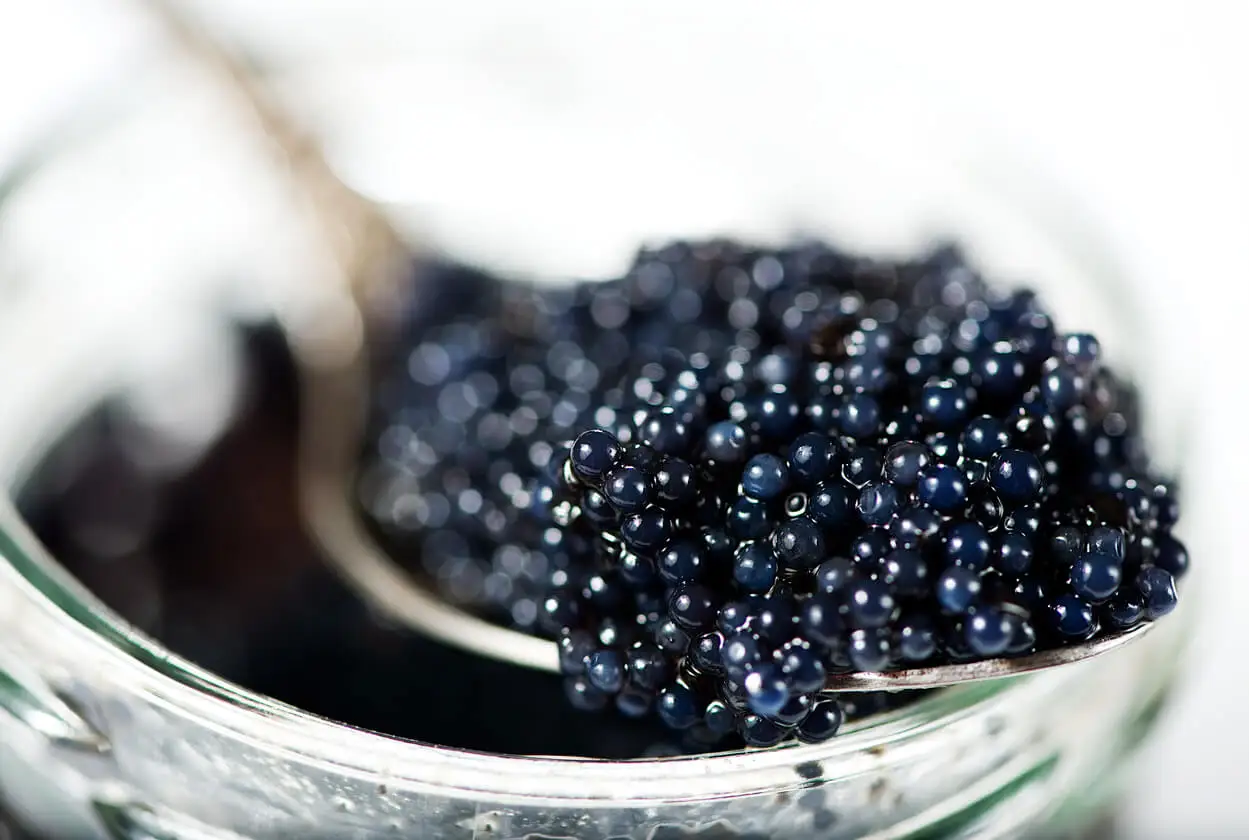Masago: The Nutrients and Uses of Capelin Fish Roe


Written and verified by the nutritionist Saúl Sánchez Arias
The roe of the capelin fish is known as masago. It’s widely used in Japanese gastronomy to decorate different types of sushi and has a differentiated nutritional value. It’s possible to introduce it into your diet to improve its quality and prevent deficiencies of essential minerals that could alter the state of your health. In this article, we’re going to teach you how to make the most of them, as well as their secrets.
Before starting, it’s first necessary to emphasize that it’s a good idea to increase the presence of seafood in your diet. Seafood usually concentrates very few calories, but is also a great source of high-quality essential nutrients. Thanks to these elements, inefficiencies in the functioning of the body’s systems can be prevented, which can reduce the likelihood of chronic and complex diseases.

Important nutrients in masago
Masago stands out as a source of vitamin D. This element is found in few foods and is of vital importance for health. In fact, its deficiency is related to an increased risk of suffering cardiovascular alterations, as well as certain types of cancer. A study published in the International Journal of Molecular Sciences confirms this. To avoid this kind of problem, it’s necessary to ensure a regular intake of this vitamin.

This foodstuff contains many healthy omega three fatty acids. These contribute to balancing the inflammatory processes in the internal environment, thus helping to consolidate a state of homeostasis. This is evidenced by research published in the Journal of the American College of Nutrition. However, it’s important to balance your body’s levels of omega 3 and omega 6 intake in order to experience this benefit.
Unlike other seafood, masago contains little mercury. This heavy metal is present in significant quantities in some large fish and is an element that can accumulate in adipose tissue. When this happens, alterations in the physiology of the central nervous system are experienced that have been shown to increase the incidence of brain-related diseases.
We think you may also enjoy reading this article: Fish Protein: Why It Shouldn’t Be Missing from Your Diet
Contraindications of masago
Despite its nutrients and potential benefits, there are some disadvantages associated with the consumption of masago. The most important of these is that it’s a high sodium food. For many people, this will not be a determining factor in choosing against it, but it’s true that there are populations with a higher risk of increasing blood pressure under a high consumption of this mineral.
Also, masago is often combined with unhealthy products in preparations such as sushi. It’s often accompanied by certain sauces that may contain trans fatty acids. These increase inflammation in the internal environment and can promote the development of many chronic and complex diseases, such as Type 2 diabetes.
Like this article? You may also like to read: Can Eating Fish Reduce The Pain from Rheumatoid Arthritis?
Nutritional information
Speaking of its nutrients and energy value, it should be noted that every 16 grams of masago provide about 40 calories. The carbohydrate content is very low and doesn’t reach one gram in that amount. However, it contains a significant amount of protein, as well as fat. In fact, 3.9 grams of the first nutrient and 2.9 grams of the second.
As far as micronutrients are concerned, special mention should be made of the contribution of vitamin B12 and selenium. It’s also a source of magnesium and sodium, besides containing vitamin D. Its consumption could even help to cover your daily requirements of calcium, as this element is a determinant to guarantee bone health.
How to use masago in the kitchen

The most common way to use this ingredient is to incorporate masago in sushi pieces as decoration. It has a crunchy touch and a sea-like flavor that will greatly enhance the organoleptic characteristics of this traditional Japanese dish.
However, it’s also possible to introduce it in other preparations such as salads, poke bowls, or rice dishes. It’s even possible to prepare a delicious sauce with mayonnaise and masago to dip different foods.
However, we must not forget that some people may develop allergic reactions to this foodstuff. In the case of experiencing any symptoms of a possible allergy, the best thing to do is to consult a specialist as soon as possible. This is not very common, but it could occur in certain situations. The most frequent manifestations are swelling, itching, or urticaria after ingestion of the product.
Masago is a healthy food
As you have seen, masago is a food that has several essential nutrients that can help to improve the state of health. It’s possible to include it in your diet on a regular basis in different types of preparations. However, intake should be monitored in the case of people who are hypersensitive to sodium. However, in most contexts, it will cause more benefits than harm.
Finally, remember that when it comes to improving your health, it’s not enough just to take care of your diet. It will also be necessary to implement a series of habits as a whole. Among them, we can highlight the need to practice physical activity on a regular basis, focusing especially on muscular strength work. Thanks to this, you can help balance inflammatory states in the body, which helps to prevent various diseases.
All cited sources were thoroughly reviewed by our team to ensure their quality, reliability, currency, and validity. The bibliography of this article was considered reliable and of academic or scientific accuracy.
- Latic, N., & Erben, R. G. (2020). Vitamin D and Cardiovascular Disease, with Emphasis on Hypertension, Atherosclerosis, and Heart Failure. International journal of molecular sciences, 21(18), 6483. https://doi.org/10.3390/ijms21186483
- Simopoulos A. P. (2002). Omega-3 fatty acids in inflammation and autoimmune diseases. Journal of the American College of Nutrition, 21(6), 495–505. https://doi.org/10.1080/07315724.2002.10719248
- Yang, L., Zhang, Y., Wang, F., Luo, Z., Guo, S., & Strähle, U. (2020). Toxicity of mercury: Molecular evidence. Chemosphere, 245, 125586. https://doi.org/10.1016/j.chemosphere.2019.125586
This text is provided for informational purposes only and does not replace consultation with a professional. If in doubt, consult your specialist.








